Preparing a dissolved oxygen electrolyte solution with precision is critical in environmental monitoring, analytical chemistry, and industrial water testing. Ensuring accuracy during preparation not only improves measurement reliability but also guarantees consistency across repeated tests. In this comprehensive guide, we delve into every detail needed to correctly prepare a dissolved oxygen (DO) electrolyte solution, including best practices, materials, safety measures, and storage tips.
What is a Dissolved Oxygen Electrolyte Solution?
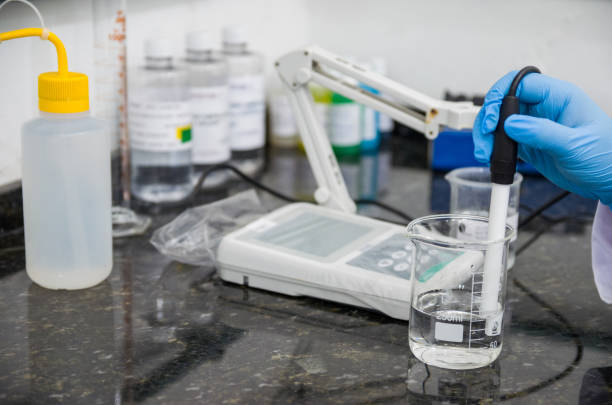
A dissolved oxygen electrolyte solution is a chemical solution used primarily in electrochemical sensors for measuring the oxygen content dissolved in water. These solutions facilitate ion transport within DO sensors and are essential for ensuring stable and responsive readings. Commonly used in Clark-type or polarographic DO sensors, the electrolyte acts as a conductive medium between the sensor’s anode and cathode.
Materials Required for DO Electrolyte Solution Preparation
To prepare an accurate dissolved oxygen electrolyte solution, you’ll need the following materials:
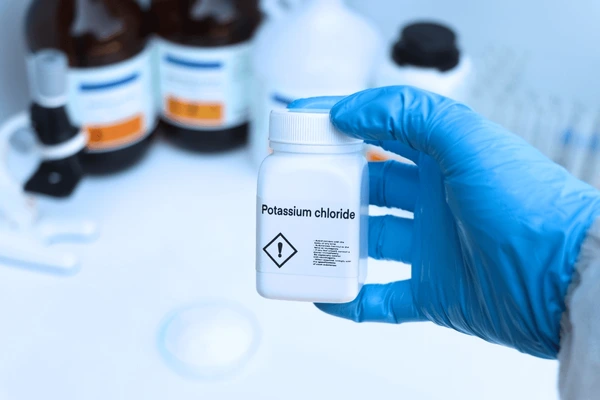
- Potassium Chloride (KCl) or Sodium Chloride (NaCl) – depending on sensor specifications
- Deionized Water or Distilled Water – To prevent interference from minerals and impurities
- Analytical Balance – for precise weighing of solutes
- Volumetric Flask – for accurate solution volume preparation
- Beakers and Glass Stir Rods – for mixing
- Gloves and Safety Goggles – for safety during handling
- Labeling Supplies – for marking concentration and preparation date
Guide to Prepare Dissolved Oxygen Electrolyte Solution
Step 1: Review Sensor Specifications
Before you begin, refer to your DO sensor manufacturer’s documentation to determine the correct electrolyte composition. Some sensors require 3M KCl, while others might require NaCl or a proprietary solution.
Step 2: Prepare a Clean Workspace
Ensure that your workspace is free of contaminants. Clean all glassware thoroughly using deionized water and dry them completely. Contaminants can significantly alter the conductivity and interfere with sensor readings.
Step 3: Weigh the Solute
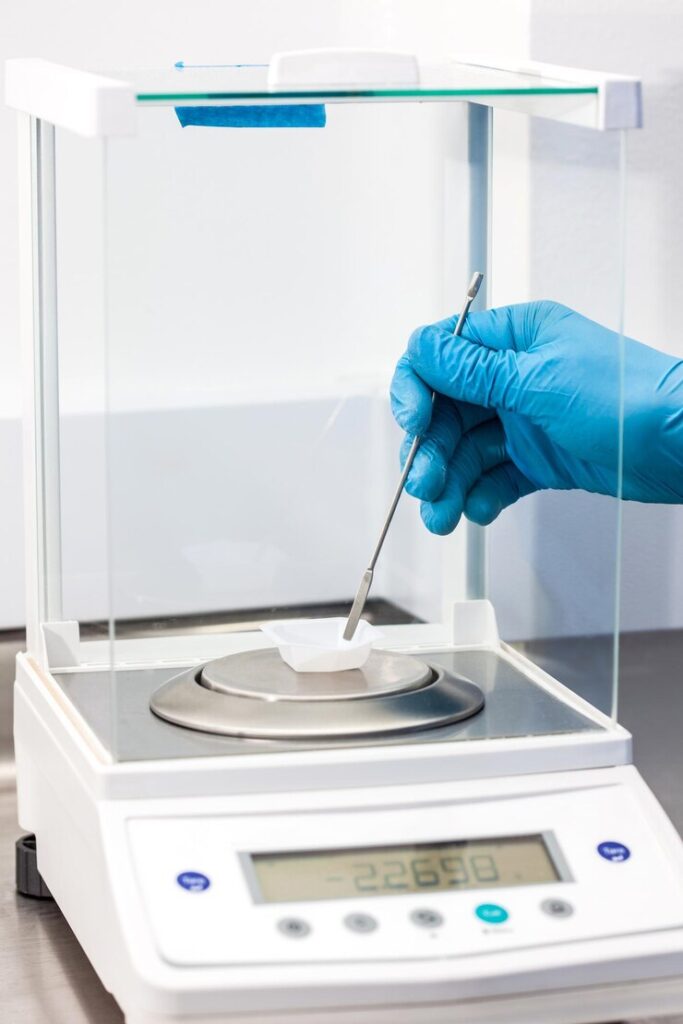
Use an analytical balance to weigh the precise amount of solute. For example, to prepare 100 mL of 3M KCl solution, use the following calculation:
- Molar mass of KCl = 74.55 g/mol
- 3 moles × 74.55 g/mol = 223.65 grams/L
- For 100 mL: 223.65 g × 0.1 = 22.37 g KCl
Weigh 22.37 grams of KCl accurately.
Step 4: Add Solute to Water
In a clean beaker, add approximately 80 mL of deionized water. Slowly add the KCl or NaCl to the water while stirring gently with a glass rod to promote dissolution.
Important: Always add solute to solvent, not the other way around, to avoid heat-related splashes or incorrect volumes.
Step 5: Transfer and Make Up the Volume
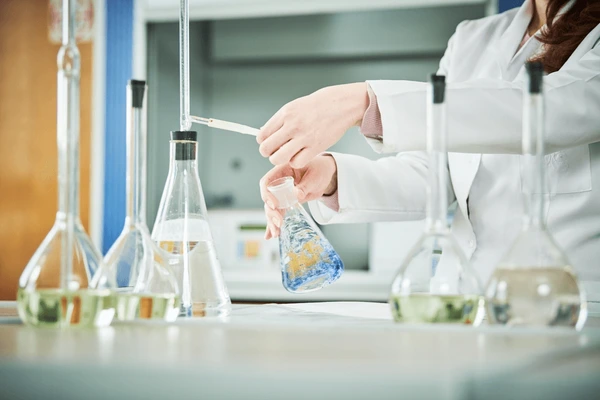
Once the solute is completely dissolved, transfer the solution into a 100 mL volumetric flask. Rinse the beaker and stir rod with small amounts of deionized water, adding the rinses to the flask to ensure quantitative transfer.
Fill the flask with deionized water up to the calibration mark. Mix thoroughly by inverting the flask several times.
Storage of Electrolyte Solution
Proper storage of your dissolved oxygen electrolyte solution is critical to maintain stability and prevent contamination.
- Use amber or opaque bottles to prevent light degradation.
- Label clearly with the solution name, concentration, and date of preparation.
- Store in a cool, dry, and well-ventilated place at room temperature.
- Make sure the bottle is securely sealed to prevent evaporation and contamination from the surrounding air.
For best results, use freshly prepared solution within 30 days, unless the manufacturer specifies a longer shelf life.
Precautions and Safety Measures
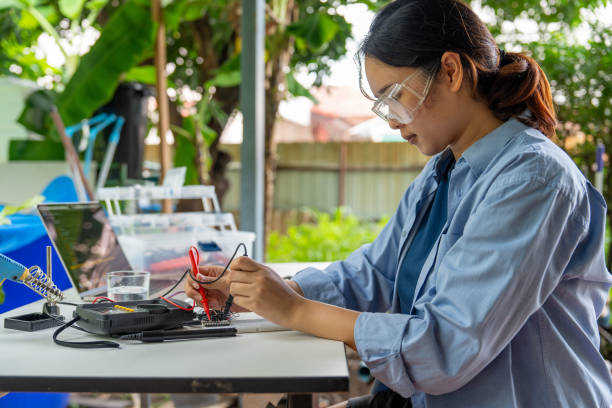
Chemicals handling, even common salts like KCl or NaCl, requires attention to safety:
- Wear gloves and goggles at all times during preparation.
- Work in a well-ventilated area or under a fume hood.
- Dispose of excess solution according to local environmental guidelines.
- Avoid contamination by using dedicated equipment for electrolyte preparation.
Common Variations in DO Electrolyte Formulations
Depending on your equipment, you might need variations in electrolyte solutions:
| Sensor Type | Recommended Electrolyte | Concentration |
|---|---|---|
| Clark-type DO Sensor | Potassium Chloride (KCl) | 3M or 0.1M |
| Galvanic DO Sensor | Sodium Chloride (NaCl) | 0.5M to 1M |
| Optical DO Sensor | None (no electrolyte) | Not applicable |
Always use the user manual for your specific DO meter or sensor.
Troubleshooting Tips for DO Electrolyte Issues
1. Unstable or Fluctuating Readings
- This may indicate contaminated or expired electrolytes.
- Replace with freshly prepared solution.
2. Sensor Slow to Respond
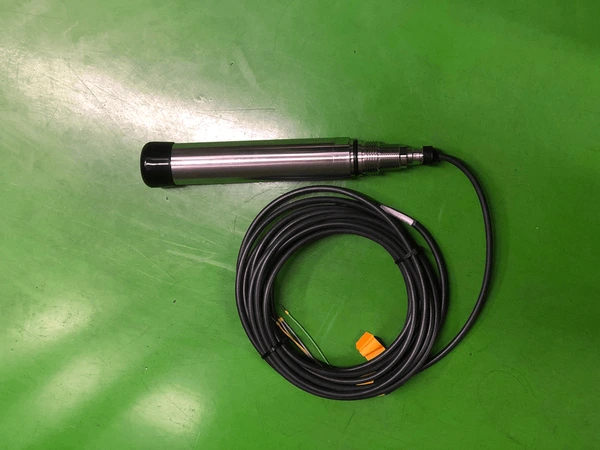
- Check for crystallized salts around the membrane.
- Rinse the sensor tip with deionized water and refill with fresh electrolyte.
3. Presence of Bubbles in Electrolyte Chamber
- Trapped air can interfere with ion flow.
- Tap gently to release bubbles before sealing the sensor.
Conclusion
Preparing a dissolved oxygen electrolyte solution requires attention to detail, accuracy, and cleanliness. Whether you’re conducting routine water quality assessments or involved in advanced research, a properly prepared electrolyte ensures accurate DO measurements, prolongs sensor life, and upholds data integrity. Always tailor your preparation process according to the specific sensor requirements and follow good laboratory practices to achieve optimal results.
How to Prepare Dissolved Oxygen Electrolyte Solution
Preparing a dissolved oxygen electrolyte solution with precision is critical in environmental monitoring, analytical chemistry, and industrial water testing. Ensuring accuracy during preparation not only improves measurement reliability but also guarantees consistency across repeated tests. In this comprehensive guide, we delve into every detail needed to correctly prepare a dissolved oxygen (DO) electrolyte solution, including best practices, materials, safety measures, and storage tips.

A dissolved oxygen electrolyte solution is a chemical solution used primarily in electrochemical sensors for measuring the oxygen content dissolved in water. These solutions facilitate ion transport within DO sensors and are essential for ensuring stable and responsive readings. Commonly used in Clark-type or polarographic DO sensors, the electrolyte acts as a conductive medium between the sensor’s anode and cathode.
Materials Required for DO Electrolyte Solution Preparation
To prepare an accurate dissolved oxygen electrolyte solution, you’ll need the following materials:

Potassium Chloride (KCl) or Sodium Chloride (NaCl) – depending on sensor specifications
Deionized Water or Distilled Water – To prevent interference from minerals and impurities
Analytical Balance – for precise weighing of solutes
Volumetric Flask – for accurate solution volume preparation
Beakers and Glass Stir Rods – for mixing
Gloves and Safety Goggles – for safety during handling
Labeling Supplies – for marking concentration and preparation date
Guide to Prepare Dissolved Oxygen Electrolyte Solution
Step 1: Review Sensor Specifications
Before you begin, refer to your DO sensor manufacturer’s documentation to determine the correct electrolyte composition. Some sensors require 3M KCl, while others might require NaCl or a proprietary solution.
Step 2: Prepare a Clean Workspace
Ensure that your workspace is free of contaminants. Clean all glassware thoroughly using deionized water and dry them completely. Contaminants can significantly alter the conductivity and interfere with sensor readings.
Step 3: Weigh the Solute

Use an analytical balance to weigh the precise amount of solute. For example, to prepare 100 mL of 3M KCl solution, use the following calculation:
Molar mass of KCl = 74.55 g/mol
3 moles × 74.55 g/mol = 223.65 grams/L
For 100 mL: 223.65 g × 0.1 = 22.37 g KCl
Weigh 22.37 grams of KCl accurately.
Step 4: Add Solute to Water
In a clean beaker, add approximately 80 mL of deionized water. Slowly add the KCl or NaCl to the water while stirring gently with a glass rod to promote dissolution.
Important: Always add solute to solvent, not the other way around, to avoid heat-related splashes or incorrect volumes.
Step 5: Transfer and Make Up the Volume

Once the solute is completely dissolved, transfer the solution into a 100 mL volumetric flask. Rinse the beaker and stir rod with small amounts of deionized water, adding the rinses to the flask to ensure quantitative transfer.
Fill the flask with deionized water up to the calibration mark. Mix thoroughly by inverting the flask several times.
Storage of Electrolyte Solution
Proper storage of your dissolved oxygen electrolyte solution is critical to maintain stability and prevent contamination.
Use amber or opaque bottles to prevent light degradation.
Label clearly with the solution name, concentration, and date of preparation.
Store in a cool, dry, and well-ventilated place at room temperature.
Make sure the bottle is securely sealed to prevent evaporation and contamination from the surrounding air.
For best results, use freshly prepared solution within 30 days, unless the manufacturer specifies a longer shelf life.
Precautions and Safety Measures

Asian woman tests analog dissolved oxygen sensor functionality with smartphone app, Agriculture and aquaculture, Internet of Things (IoT)
Handling chemicals, even common salts like KCl or NaCl, requires attention to safety:
Wear gloves and goggles at all times during preparation.
Work in a well-ventilated area or under a fume hood.
Dispose of excess solution according to local environmental guidelines.
Avoid contamination by using dedicated equipment for electrolyte preparation.
Common Variations in DO Electrolyte Formulations
Depending on your equipment, you might need variations in electrolyte solutions:
| Sensor Type | Recommended Electrolyte | Concentration |
|---|---|---|
| Clark-type DO Sensor | Potassium Chloride (KCl) | 3M or 0.1M |
| Galvanic DO Sensor | Sodium Chloride (NaCl) | 0.5M to 1M |
| Optical DO Sensor | None (no electrolyte) | Not applicable |
Always use the user manual for your specific DO meter or sensor.
Troubleshooting Tips for DO Electrolyte Issues
1. Unstable or Fluctuating Readings
This may indicate contaminated or expired electrolytes.
Replace with freshly prepared solution.
2. Sensor Slow to Respond

Check for crystallized salts around the membrane.
Rinse the sensor tip with deionized water and refill with fresh electrolyte.
3. Presence of Bubbles in Electrolyte Chamber
Trapped air can interfere with ion flow.
Tap gently to release bubbles before sealing the sensor.
Conclusion
Preparing a dissolved oxygen electrolyte solution requires attention to detail, accuracy, and cleanliness. Whether you’re conducting routine water quality assessments or involved in advanced research, a properly prepared electrolyte ensures accurate DO measurements, prolongs sensor life, and upholds data integrity. Always tailor your preparation process according to the specific sensor requirements and follow good laboratory practices to achieve optimal results.
Can I use tap water to prepare the solution?
Can the solution be reused?
What is a Dissolved Oxygen Electrolyte Solution?

A dissolved oxygen electrolyte solution is a chemical solution used primarily in electrochemical sensors for measuring the oxygen content dissolved in water. These solutions facilitate ion transport within DO sensors and are essential for ensuring stable and responsive readings. Commonly used in Clark-type or polarographic DO sensors, the electrolyte acts as a conductive medium between the sensor’s anode and cathode.
Materials Required for DO Electrolyte Solution Preparation
To prepare an accurate dissolved oxygen electrolyte solution, you’ll need the following materials:

Potassium Chloride (KCl) or Sodium Chloride (NaCl) – depending on sensor specifications
Deionized Water or Distilled Water – To prevent interference from minerals and impurities
Analytical Balance – for precise weighing of solutes
Volumetric Flask – for accurate solution volume preparation
Beakers and Glass Stir Rods – for mixing
Gloves and Safety Goggles – for safety during handling
Labeling Supplies – for marking concentration and preparation date
Guide to Prepare Dissolved Oxygen Electrolyte Solution
Step 1: Review Sensor Specifications
Before you begin, refer to your DO sensor manufacturer’s documentation to determine the correct electrolyte composition. Some sensors require 3M KCl, while others might require NaCl or a proprietary solution.
Step 2: Prepare a Clean Workspace
Ensure that your workspace is free of contaminants. Clean all glassware thoroughly using deionized water and dry them completely. Contaminants can significantly alter the conductivity and interfere with sensor readings.
Step 3: Weigh the Solute

Use an analytical balance to weigh the precise amount of solute. For example, to prepare 100 mL of 3M KCl solution, use the following calculation:
Molar mass of KCl = 74.55 g/mol
3 moles × 74.55 g/mol = 223.65 grams/L
For 100 mL: 223.65 g × 0.1 = 22.37 g KCl
Weigh 22.37 grams of KCl accurately.
Step 4: Add Solute to Water
In a clean beaker, add approximately 80 mL of deionized water. Slowly add the KCl or NaCl to the water while stirring gently with a glass rod to promote dissolution.
Important: Always add solute to solvent, not the other way around, to avoid heat-related splashes or incorrect volumes.
Step 5: Transfer and Make Up the Volume

Once the solute is completely dissolved, transfer the solution into a 100 mL volumetric flask. Rinse the beaker and stir rod with small amounts of deionized water, adding the rinses to the flask to ensure quantitative transfer.
Fill the flask with deionized water up to the calibration mark. Mix thoroughly by inverting the flask several times.
Storage of Electrolyte Solution
Proper storage of your dissolved oxygen electrolyte solution is critical to maintain stability and prevent contamination.
Use amber or opaque bottles to prevent light degradation.
Label clearly with the solution name, concentration, and date of preparation.
Store in a cool, dry, and well-ventilated place at room temperature.
Make sure the bottle is securely sealed to prevent evaporation and contamination from the surrounding air.
For best results, use freshly prepared solution within 30 days, unless the manufacturer specifies a longer shelf life.
Precautions and Safety Measures

Asian woman tests analog dissolved oxygen sensor functionality with smartphone app, Agriculture and aquaculture, Internet of Things (IoT)
Handling chemicals, even common salts like KCl or NaCl, requires attention to safety:
Wear gloves and goggles at all times during preparation.
Work in a well-ventilated area or under a fume hood.
Dispose of excess solution according to local environmental guidelines.
Avoid contamination by using dedicated equipment for electrolyte preparation.
Common Variations in DO Electrolyte Formulations
Depending on your equipment, you might need variations in electrolyte solutions:
| Sensor Type | Recommended Electrolyte | Concentration |
|---|---|---|
| Clark-type DO Sensor | Potassium Chloride (KCl) | 3M or 0.1M |
| Galvanic DO Sensor | Sodium Chloride (NaCl) | 0.5M to 1M |
| Optical DO Sensor | None (no electrolyte) | Not applicable |
Always use the user manual for your specific DO meter or sensor.
Troubleshooting Tips for DO Electrolyte Issues
1. Unstable or Fluctuating Readings
This may indicate contaminated or expired electrolytes.
Replace with freshly prepared solution.
2. Sensor Slow to Respond

Check for crystallized salts around the membrane.
Rinse the sensor tip with deionized water and refill with fresh electrolyte.
3. Presence of Bubbles in Electrolyte Chamber
Trapped air can interfere with ion flow.
Tap gently to release bubbles before sealing the sensor.
Conclusion
Preparing a dissolved oxygen electrolyte solution requires attention to detail, accuracy, and cleanliness. Whether you’re conducting routine water quality assessments or involved in advanced research, a properly prepared electrolyte ensures accurate DO measurements, prolongs sensor life, and upholds data integrity. Always tailor your preparation process according to the specific sensor requirements and follow good laboratory practices to achieve optimal results.
What happens if I use the wrong concentration?
What are the methods of preparation for dissolved oxygen electrolyte solution?
To prepare an accurate dissolved oxygen electrolyte solution, you’ll need the following materials:

Potassium Chloride (KCl) or Sodium Chloride (NaCl) – depending on sensor specifications
Deionized Water or Distilled Water – To prevent interference from minerals and impurities
Analytical Balance – for precise weighing of solutes
Volumetric Flask – for accurate solution volume preparation
Beakers and Glass Stir Rods – for mixing
Gloves and Safety Goggles – for safety during handling
Labeling Supplies – for marking concentration and preparation date
Guide to Prepare Dissolved Oxygen Electrolyte Solution
Step 1: Review Sensor Specifications
Before you begin, refer to your DO sensor manufacturer’s documentation to determine the correct electrolyte composition. Some sensors require 3M KCl, while others might require NaCl or a proprietary solution.
Step 2: Prepare a Clean Workspace
Ensure that your workspace is free of contaminants. Clean all glassware thoroughly using deionized water and dry them completely. Contaminants can significantly alter the conductivity and interfere with sensor readings.
Step 3: Weigh the Solute: dissolved oxygen electrolyte solution

Use an analytical balance to weigh the precise amount of solute. For example, to prepare 100 mL of 3M KCl solution, use the following calculation:
Molar mass of KCl = 74.55 g/mol
3 moles × 74.55 g/mol = 223.65 grams/L
For 100 mL: 223.65 g × 0.1 = 22.37 g KCl
Weigh 22.37 grams of KCl accurately.
Step 4: Add Solute to Water
In a clean beaker, add approximately 80 mL of deionized water. Slowly add the KCl or NaCl to the water while stirring gently with a glass rod to promote dissolution.
Important: Always add solute to solvent, not the other way around, to avoid heat-related splashes or incorrect volumes.
Step 5: Transfer and Make Up the Volume

Once the solute is completely dissolved, transfer the solution into a 100 mL volumetric flask. Rinse the beaker and stir rod with small amounts of deionized water, adding the rinses to the flask to ensure quantitative transfer.
dissolved oxygen electrolyte solution
Fill the flask with deionized water up to the calibration mark. Mix thoroughly by inverting the flask several times.
Storage of Electrolyte Solution
Proper storage of your dissolved oxygen electrolyte solution is critical to maintain stability and prevent contamination.
Use amber or opaque bottles to prevent light degradation.
Label clearly with the solution name, concentration, and date of preparation.
Store in a cool, dry, and well-ventilated place at room temperature.
dissolved oxygen electrolyte solution
Make sure the bottle is securely sealed to prevent evaporation and contamination from the surrounding air.
